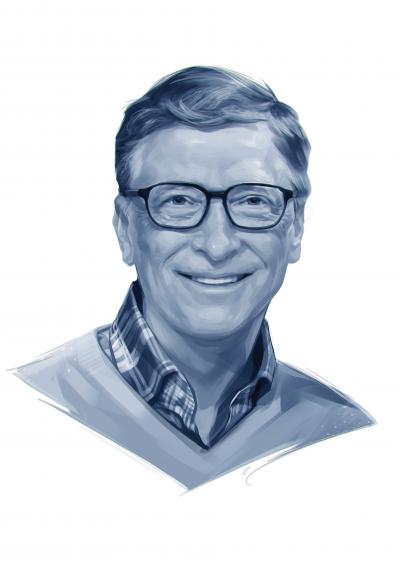Our Clubs
4 questions about
Working with Rotary to eradicate polio

with
Bill Gates
Co-chair of the Bill & Melinda Gates Foundation
1. What made you decide to work on polio eradication?
In 1952, three years before I was born, the U.S. experienced one of the worst polio epidemics in its history. Thousands died and even more were paralyzed. I was born a few months after the first polio vaccine became available. Growing up, I had no idea how lucky I was.
Later in life through the work of our foundation, I began to see firsthand the impact that polio was having on kids. The U.S. had seen its last case of polio in 1979 thanks to polio vaccines, but even 25 years later in 2004, more than 1,000 children in Asia and Africa were paralyzed by polio simply because of where they were born.
Before our foundation joined the fight to end polio in 2007, I had spent months talking to experts and analyzing the history of eradication. While global progress against polio had stalled, I believed that eradication was possible because the world had done it before, with smallpox in 1980.
Rotary played an important role in inspiring the foundation to become involved in the Global Polio Eradication Initiative, an incredible global partnership committed to fighting the disease. We knew that Rotarians would be passionate, committed allies in the push for eradication.
2. The number of polio cases increased in 2019. Why are you still optimistic that eradication is possible?
It’s true that we saw the number of cases go up in 2019, but we need to look at what has happened over the past three decades. In the 1980s, polio paralyzed 1,000 children globally every day. Today, that number has fallen 99.9 percent and the wild poliovirus is confined to just Afghanistan and Pakistan. Because of eradication efforts, there are 18 million people walking around who would have otherwise been paralyzed by the virus.
The past 30 years have been marked with incredible achievements. One of my favorite examples is India. The country was once considered the toughest place to eliminate the disease, but in 2011, the country recorded its last case of polio derived from the wild poliovirus.
In 2013, health workers managed to contain a wild poliovirus outbreak during the Syrian civil war. Vaccinators not only had to enter the war zone, waiting for lulls in the fighting to make sure children were protected, but also had to account for the 2 million refugees fleeing to neighboring Iraq, Jordan, Lebanon, and Turkey. Within weeks, the World Health Organization (WHO) announced a plan to immunize 2.4 million Syrian children, and the outbreak was over by the following year.
In 2016, the wild poliovirus re-emerged in Nigeria. Health workers and partners redoubled their efforts, and the country has now gone more than three years without a new case, which means the entire WHO African region could be certified free of wild poliovirus in 2020. This achievement was difficult to imagine just a few years ago.
The final cases of polio are proving particularly difficult. But the polio program has overcome enormous challenges to keep driving progress, and we’ve spent the past decade sharpening the tools and strategies we need to finish the job. With the continued commitment of our partners like Rotary, I’m sure we’ll consign polio to history.
3. Why are you extending the Gates Foundation’s 2-to-1 funding match with Rotary?
The Gates Foundation’s long-standing partnership with Rotary has been crucial in the fight against polio. Through extending our funding match, we can raise $150 million every year — money that is essential to the eradication effort.
But there’s another thing about this funding match, which people don’t often know: The money helps us fight more than polio. At the same time that we’re delivering the polio vaccine to communities, we’re also bringing them bed nets to protect against malaria, improving access to clean drinking water, and helping immunize kids against other vaccine-preventable diseases. We’re making sure that every dollar we raise counts.
4. What message would you like to deliver to Rotarians as we confront the final challenges to eradication?
Everyone at our foundation is inspired by Rotary and proud to work alongside you.
Rotary was the first organization to push for a polio-free world. And for the past 30 years, so many Rotarians have been part of fundraising, vaccination, and advocacy efforts that have brought us close to the magic number of zero cases.
The final steps to a polio-free world are the hardest — and we’ll need the help of every Rotarian to get there. But I’m confident that we will end polio together.
• Illustration by Viktor Miller Gausa
• This story originally appeared in the March 2020 issue of The Rotarian magazine.
